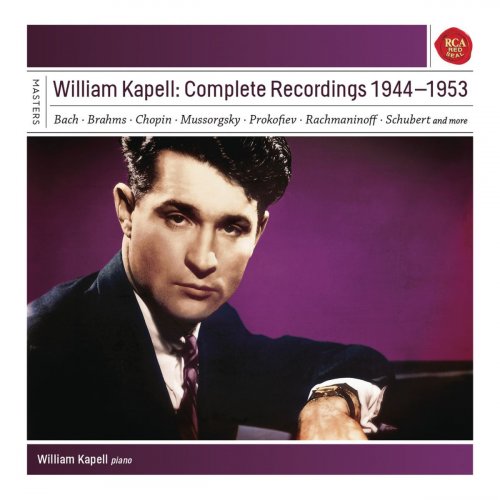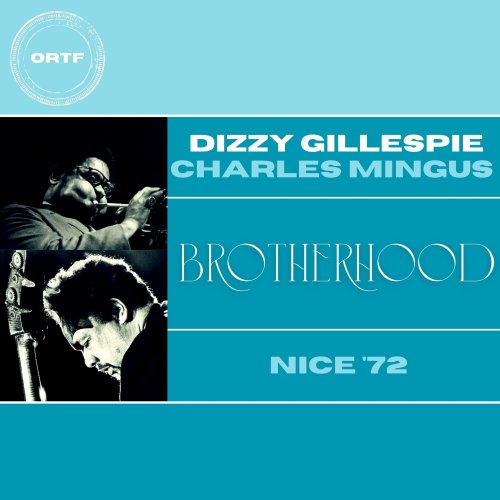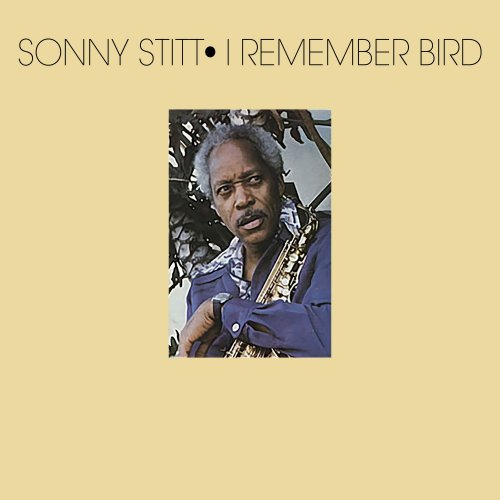William Kapell - William Kapell: Complete Recordings 1944-1953 (2013)

Artist: William Kapell
Title: William Kapell: Complete Recordings 1944-1953
Year Of Release: 2013
Label: Sony Classical
Genre: Classical
Quality: FLAC (tracks)
Total Time: 12:38:28
Total Size: 2.39 GB
WebSite: Album Preview
Title: William Kapell: Complete Recordings 1944-1953
Year Of Release: 2013
Label: Sony Classical
Genre: Classical
Quality: FLAC (tracks)
Total Time: 12:38:28
Total Size: 2.39 GB
WebSite: Album Preview
The death of William Kapell in a 1953 plane crash at age 31 robbed the music world of an important musician regarded as a role model for American pianists who emerged on the international scene after World War II, just as Leonard Bernstein paved the way for future American conductors. He left behind a fair yet not particularly large recorded legacy: the self-critical pianist was choosy about what he would approve for release.
Most of his recordings were unavailable for decades when RCA finally brought out a painstakingly remastered complete Kapell edition on nine CDs in 1998, supplanted by unpublished studio sessions and live material. Ten years later RCA released “William Kapell reDiscovered”, a two-CD collection of broadcast concerts from the pianist’s final Australian tour that came to light in 2003, stemming from acetate discs made by a home-recording enthusiast. For those who missed these sets, Sony/RCA now brings them together in a budget-priced box.
Although Kapell was a mentor and older advisor to younger colleagues like Gary Graffman, Leon Fleisher, Jerome Lowenthal, and other so-called “OYAPS” (Outstanding Young American Pianists), and had much in common with their straightforward, uncluttered music making, he had a subjective side to his artistry that falls more in line with Slavic/Soviet pianists of the day. True, his terse and clear-cut Beethoven Second Concerto is very much in the Schnabel mode (in fact, Schnabel mistook Kapell’s recording for his own when hearing it broadcast), while the Rachmaninov Paganini Rhapsody’s driving, acerbic neo-classical sound-world plays down the composer’s roots in Russian Romanticism.
In the first American recording of Khachaturian’s Piano Concerto, Kapell’s incisive bravura makes it easy to get past the cramped sonics and Serge Koussevitsky’s bloated accompaniment. At the same time, Kapell was no purist. He did not hesitate to play certain Busoni modifications in Liszt’s Mephisto Waltz, or Vladimir Horowitz’s rewritten version of the Great Gate at Kiev in Mussorgsky’s Pictures at an Exhibition, or the final upward scales in Chopin’s B minor Scherzo as interlocking octaves (à la Horowitz and Jeanne-Marie Darré). Furthermore, many of the discreet lingerings, the changes of color and articulation one hears in the Chopin B minor Sonata, Op. 55 No. 2 Nocturne, selected Mazurkas, and Schubert’s A-flat Impromptu D. 935 No. 2 would not be out of place in a performance by Emil Gilels or Sviatoslav Richter. The Bach D major Partita also has its fair share of ravishing legato and dynamic dips, although the linear clarity and minuscule use of the sustain pedal foreshadows modern Bach pianism as popularized by Glenn Gould, minus the eccentricities.
Most valuable, perhaps, is the live Frick Collection concert, featuring one of the most rhythmically focused, committed, and passionate performances of Copland’s Piano Sonata extant. Kapell’s strong soloist personality did not preclude his being an equally strong and supportive chamber musician, as borne out in the Rachmaninov Cello Sonata with Edmund Kurtz, Brahms’ First Viola Sonata with William Primrose, and a Brahms Third Sonata with Jascha Heifetz that would have led to further collaborations with the legendary violinist. Recording dates are provided, but no annotations or contextual information from which less specialist collectors would benefit. -- Jed Distler, ClassicsToday
Most of his recordings were unavailable for decades when RCA finally brought out a painstakingly remastered complete Kapell edition on nine CDs in 1998, supplanted by unpublished studio sessions and live material. Ten years later RCA released “William Kapell reDiscovered”, a two-CD collection of broadcast concerts from the pianist’s final Australian tour that came to light in 2003, stemming from acetate discs made by a home-recording enthusiast. For those who missed these sets, Sony/RCA now brings them together in a budget-priced box.
Although Kapell was a mentor and older advisor to younger colleagues like Gary Graffman, Leon Fleisher, Jerome Lowenthal, and other so-called “OYAPS” (Outstanding Young American Pianists), and had much in common with their straightforward, uncluttered music making, he had a subjective side to his artistry that falls more in line with Slavic/Soviet pianists of the day. True, his terse and clear-cut Beethoven Second Concerto is very much in the Schnabel mode (in fact, Schnabel mistook Kapell’s recording for his own when hearing it broadcast), while the Rachmaninov Paganini Rhapsody’s driving, acerbic neo-classical sound-world plays down the composer’s roots in Russian Romanticism.
In the first American recording of Khachaturian’s Piano Concerto, Kapell’s incisive bravura makes it easy to get past the cramped sonics and Serge Koussevitsky’s bloated accompaniment. At the same time, Kapell was no purist. He did not hesitate to play certain Busoni modifications in Liszt’s Mephisto Waltz, or Vladimir Horowitz’s rewritten version of the Great Gate at Kiev in Mussorgsky’s Pictures at an Exhibition, or the final upward scales in Chopin’s B minor Scherzo as interlocking octaves (à la Horowitz and Jeanne-Marie Darré). Furthermore, many of the discreet lingerings, the changes of color and articulation one hears in the Chopin B minor Sonata, Op. 55 No. 2 Nocturne, selected Mazurkas, and Schubert’s A-flat Impromptu D. 935 No. 2 would not be out of place in a performance by Emil Gilels or Sviatoslav Richter. The Bach D major Partita also has its fair share of ravishing legato and dynamic dips, although the linear clarity and minuscule use of the sustain pedal foreshadows modern Bach pianism as popularized by Glenn Gould, minus the eccentricities.
Most valuable, perhaps, is the live Frick Collection concert, featuring one of the most rhythmically focused, committed, and passionate performances of Copland’s Piano Sonata extant. Kapell’s strong soloist personality did not preclude his being an equally strong and supportive chamber musician, as borne out in the Rachmaninov Cello Sonata with Edmund Kurtz, Brahms’ First Viola Sonata with William Primrose, and a Brahms Third Sonata with Jascha Heifetz that would have led to further collaborations with the legendary violinist. Recording dates are provided, but no annotations or contextual information from which less specialist collectors would benefit. -- Jed Distler, ClassicsToday

![Milad Dehghan - Invitation (فراخوان) (2026) [Hi-Res] Milad Dehghan - Invitation (فراخوان) (2026) [Hi-Res]](https://www.dibpic.com/uploads/posts/2026-01/1768488558_cover.jpg)






![Ilhan Ersahin, Alp Ersönmez, Izzet Kizil, Turgut Alp Bekoglu - Istanbul Sessions: Mahalle (2026) [Hi-Res] Ilhan Ersahin, Alp Ersönmez, Izzet Kizil, Turgut Alp Bekoglu - Istanbul Sessions: Mahalle (2026) [Hi-Res]](https://img.israbox.com/img/2026-01/15/ipohwxjd3n2z6fjrmuocifcej.jpg)
